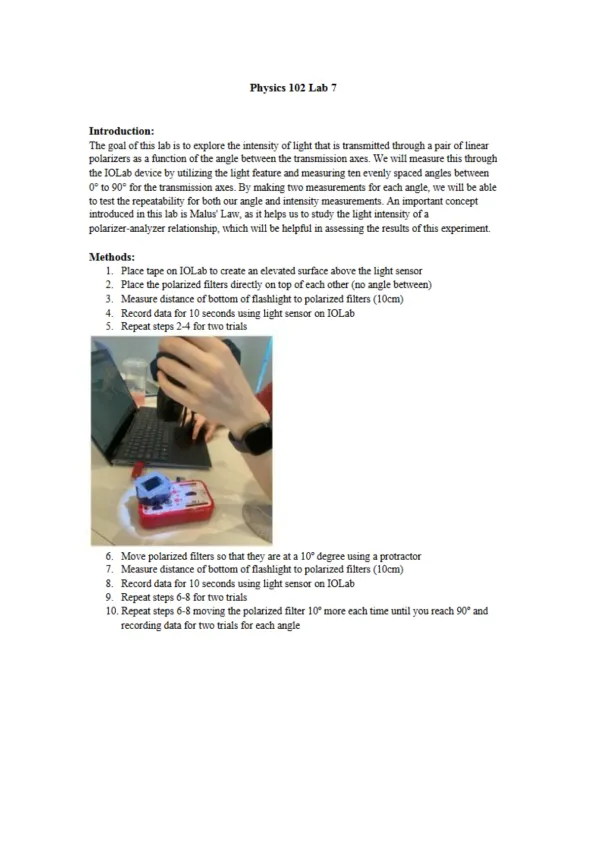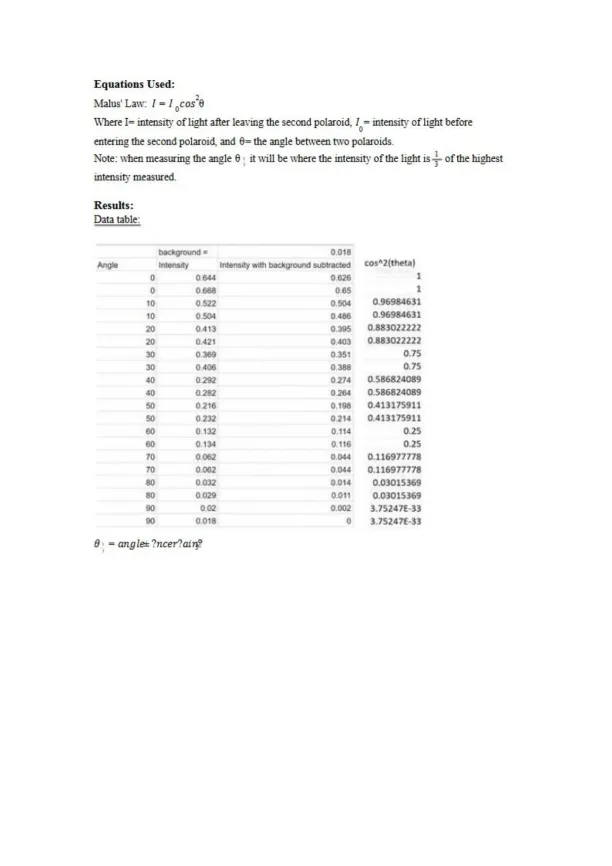Page 1

Loading page image...
Page 2

Loading page image...
Explore light intensity through linear polarizers at angles from 0° to 90°. Measure transmitted light with lOLab sensor, test repeatability with two trials per angle, and analyze results using Malus' Law.
Loading page image...
Loading page image...
This document has 4 pages. Sign in to access the full document!